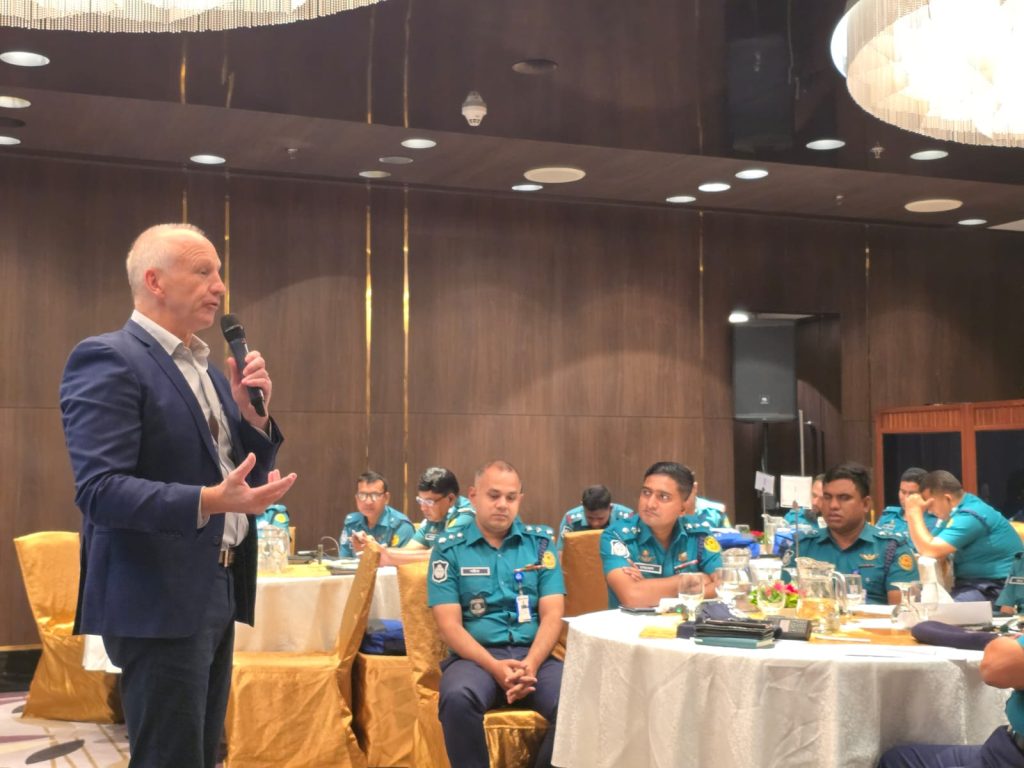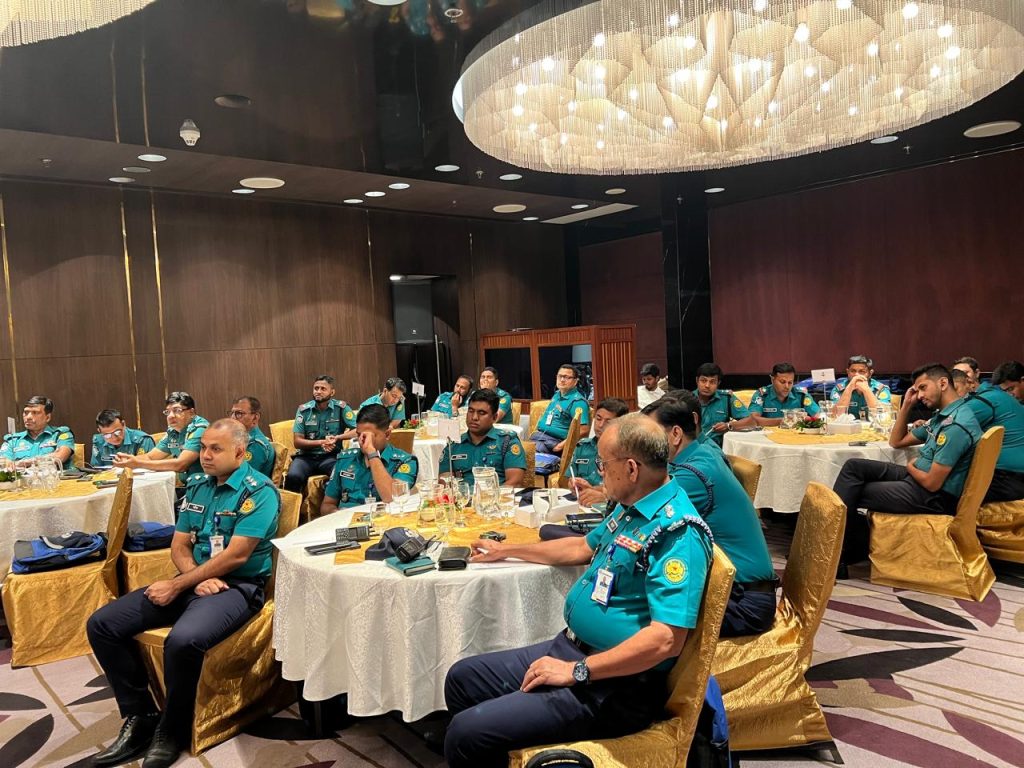DMP officials received training on vehicle speed control guidelines
16 October 2025, Dhaka:
Dhaka Metropolitan Police (DMP) and Global Road Safety Partnership (GRSP) joint organized training for police officers on road safety with focus on speed management in a hotel Dhaka. This training organized under the Bloomberg Philanthropies Initiative for Global Road Safety (BIGRS) program to enhance the capacity of police officers in implementing the speed limit guidelines in Dhaka and ensuring road safety.


In the opening program, DMP’s Additional Police Commissioner (Traffic) Dr. Md. Zillur Rahman spoke as chief guest. He stressed the police officer’s role in implementing the Road Transport Act, traffic system and speed limit control guidelines. He called on drivers to drive according to the speed limit and traffic rules. He said that if all citizens, including drivers, owners and all types of road users, cooperate, road safety can be ensured in the cities.

The event was chaired by BIGRS Coordinator and Additional Secretary (Retd.) Md. Abdul Wadud. While, Sufian Ahmed, Joint Police Commissioner (Traffic-Dhaka North) Senior Road Policing Advisors from GRSP, Michael Phyland and Paul Simcox, were also present.
GRSP Senior Road Policing Advisors Michael Phyland and Paul Simcox conducted the sessions, discussing topics such as, role of law enforcement in preventing road crashes, role of speed in crash occurrences, the importance of speed management, speed control technologies and strategies, and safe management of roadside checkpoints. They also presented audiovisual materials, graphs, and research data illustrating the risks associated with high speeds.
It is noted that, to reduce fatalities and injuries caused by road crashes, the Bangladesh Road Transport Authority (BRTA) adopted Motor-Vehicle Speed Limit Guideline 2024 that sets maximum speed limits for different types of vehicles on various roads and highways across the country. Within city corporation areas, the maximum speed for vehicles on expressways, national, and regional highways is 40 km/h, while on most other roads it is 30 km/h. The maximum speed limit for motorcycles within cities has been set at 30 km/h.
A total of 60 police officers attended in two batches, yesterday and today—including Traffic Sergeants, Sub-Inspectors, Inspectors, and Assistant/Deputy Police Commissioners—from various units of DMP participated in the training.
The training was coordinated by BIGRS-Dhaka Initiative Coordinator Md. Abdul Wadud and Enforcement Coordinator Golam Hossain. Among others Aminul Islam Sujon, Technical Advisor of Vital Strategies; Farzana Islam Toma, Consultant of the World Resources Institute (WRI); Rezaur Rahman, Transport Coordinator of BIGRS; and Dr. Tanvir Ibne Ali, Surveillance Coordinator of BIGRS were present at the event.
In the afternoon, Dr. Md. Zillur Rahman, Additional Police Commissioner (Traffic) handed over the certificates among the participants. While BIGRS Initiative Coordinator Md Abdul Wadud, Mohammad Enamul Haque and Sufian Ahmed, Joint Police Commissioner (Traffic) for Dhaka South and Dhaka North respectively were also present.
Yesterday, the training was inaugurated by the DMP Commissioner SM Sazzat Ali. He said that road traffic deaths are attributed due to different risk factors. Among them, expired or unfit vehicles and unskilled drivers, the simultaneous movement of both motorized and non-motorized vehicles on the same roads, sudden changes of lanes, indiscriminate boarding and dropping off of passengers, lack of adequate lighting at night, violation of traffic laws and signals, unsafe road design, and excessive or reckless speeding have been identified as major causes for road crashes. Excessive speed increases the risk of road crashes, premature deaths, and permanent disabilities. Therefore, driving within the prescribed speed limits for different types of roads and vehicles can significantly reduce the risk of road crashes. In other words, following speed limits save lives. Additionally, ensuring safe vehicles, safe road designs, and compliance with traffic laws and signals can make roads safer.